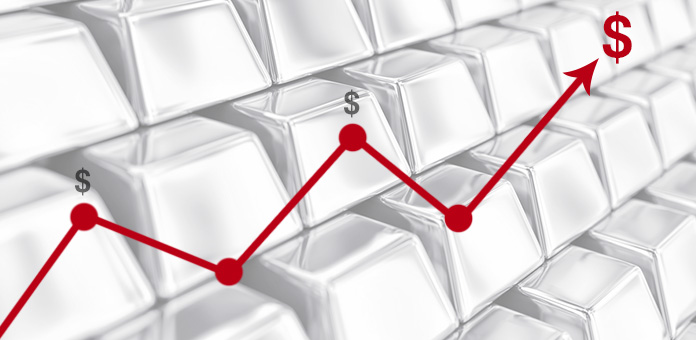
For years, analysts have been talking about the issue of “peak silver.” Recently, the Silver Institute issued its “GFMS World Silver Survey 2017.” This report indicated that silver mine production on a global basis in 2016 dropped to about 886 million ounces from 891 million ounces in 2015. 1 This marked the first time in more than a decade that silver production decreased. 2 Has the white metal peaked?
Silver Supply and Demand
The question of peak silver is of vital importance because of the role supply and demand plays in setting prices for any commodity. 3 It is a fundamental principle of all markets that as demand increases in the face of declining supplies prices will rise. While this effect ultimately plays out in free markets, the challenge lies in accurately predicting when maximum production of any resource has been reached and is on a downward trend.
Silver Supply
Silver primarily comes from three sources:
- Mining Production: both primary and as a byproduct of gold and other metal extraction.
- Central Banks: Sales of silver from their repositories
- Silver Scrap: The use of scrap supplies of the white metal.
Cost to Mine Silver
The issue of peak silver from a production perspective is getting increased attention of late. Numerous silver mines have shut down or lowered their production levels, and the decline is due to a number of factors. One of the most relevant is the immense amount of fuel needed to produce silver and base metals. Even with unusually low energy costs, fuel represents a significant portion of the cost of production.
Primary mining for silver accounts for only 30 percent of the world’s annual production of the metal. Zinc, lead, and copper mining generate 56 percent of the total, and those mining operations are especially sensitive to the cost of energy. 4 For example, some copper mining operations consume 94 gallons of fuel to produce one ton of the metal. As those mines cut their operations, it dramatically impacts the global supply of silver.
Earth’s Gold and Silver Reserves
It is important to remember a basic fact about precious metals. While the amount of physical gold and silver held in vaults, banks, depositories, and personally by the public is quite small, these metals are relatively abundant in absolute terms. For example, it is estimated there is enough gold in the earth’s core to cover the earth with a layer of the yellow metal more than a foot thick. 5 Moreover, the oceans alone are believed to contain at least 20 million tons of gold. 6 Silver, while still one of the rarest metals, is 17.5 times more plentiful in the planet’s crust than gold. 7
However, these numbers are irrelevant when the cost of production for gold and silver is taken into consideration. A significant point for all investors to consider is that the cost of production of silver is now close to or above the market price. As noted above, energy costs account for much of the expense of mining, and that part of the equation will continue to increase. Thus, the issue of peak silver is based on the fact that even if prices rise, production will be too expensive to ever again support historic levels. These factors indicate increasingly higher prices simply to meet the growing silver demand.
Silver Demand Growing
The question being asked is whether the current declines represent a true peak in the production of silver or a temporary situation. If the world has seen the highest level of annual production it will likely see again, that means increasing demand will create higher prices for available silver.
An additional factor analysts are evaluating is the fact that growing market demand means the shift that occurred when the use of silver in photographic processes declined has now reversed. This growth in demand is coming from a number of areas, and the use of silver in green energy devices is a major driver. Moreover, the scrap silver recovered from old film and processing is no longer a significant source of supply.
While speculators react to short-term factors and news, long-term buyers of silver understand the importance of looking at all the market factors affecting silver prices. If the world has seen peak production of silver and has to adjust to declining supplies in the face of increasing demand, it will begin paying a significant premium for this precious metal. Those buying silver in 2017 may well be finding true bargains in current prices.


